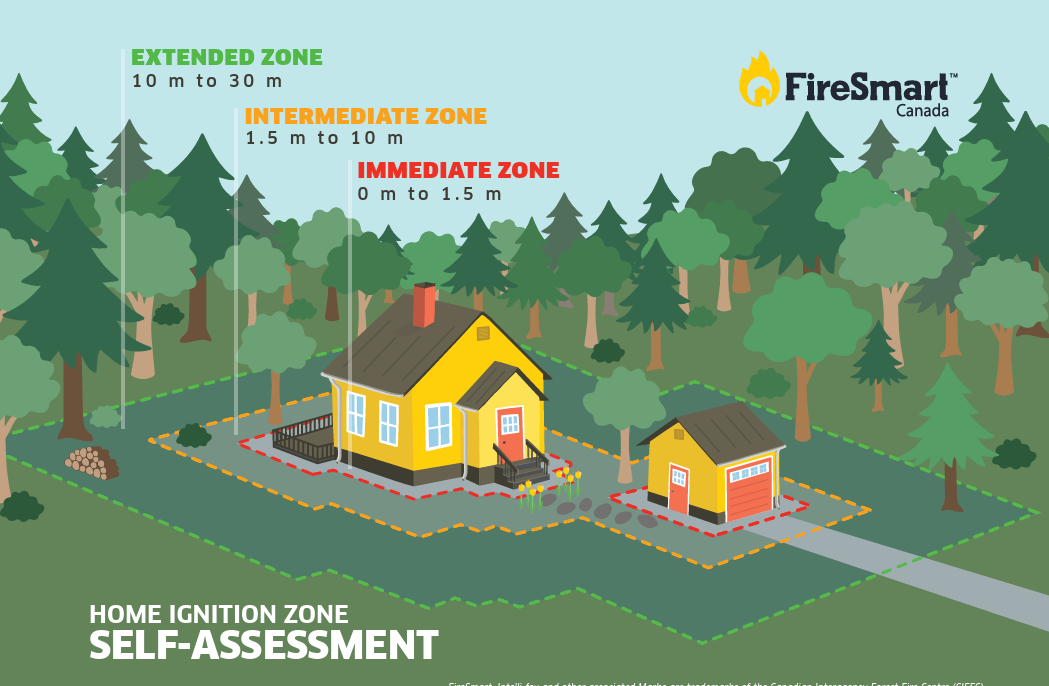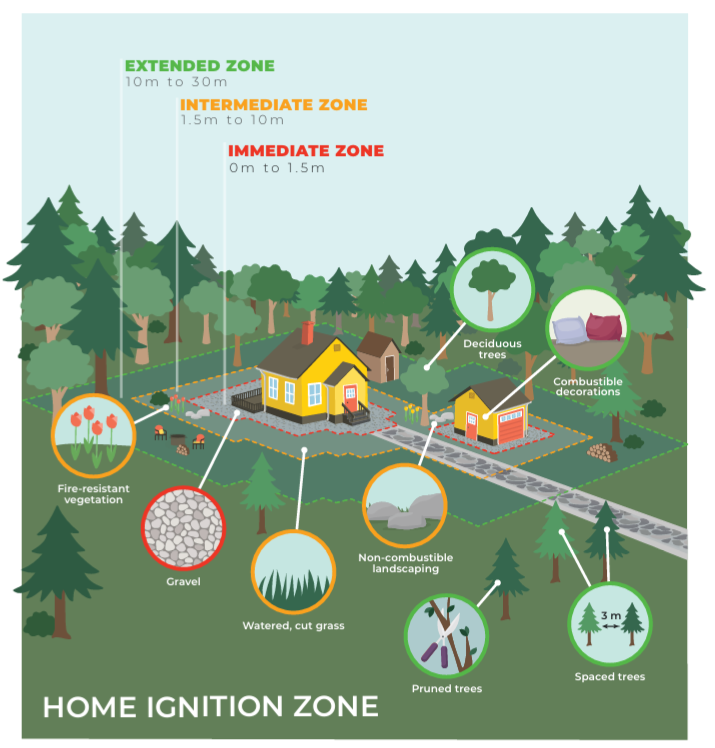Wildland Fires
Wildland fire could strike at any time of year, but the most common times are in the spring (before vegetation is green) and in the summer (when there is high heat and low humidity).
Take steps to prepare for a wildland fire such as:
- Use FireSmart mitigation techniques on your property to help protect your home and any other structures from wildland fire damage
- If told to evacuate immediately, do it. If you have time, follow the tips on the FireSmart Wildland fire evacuation preparedness checklist
- Prepare an emergency kit and make sure everyone in the household knows where it is
- Make sure everyone in the household understands how to execute your emergency plan
FireSmart™ Canada
FireSmart™ Canada is a national program that helps Canadians increase neighbourhood resilience to wildfire and minimize its negative impacts. Visit the FireSmart Canada website to learn all about their initiatives and about how to FireSmart your property!
How wildland fires spread |
||||||
|
Knowing how wildland fires spread can help you manage your property in a way that can help mitigate damage if a wildland fire occurs on, or near, your property.
The topography of your property may affect how fire moves through it; for example, fire moves fastest when spreading uphill: the steeper the slope, the faster a wildland fire will spread up the hill. Homes on hills, or at the top of hills, face the greatest risk from wildland fire. If your home is located on a hill, consider taking extra measures, like removing trees, shrubs, and tall vegetation on the slope(s) and planting fire resistant plants instead. |
||||||
Home ignition zones (HIZ) |
||||||
|
How you mitigate your property against wildland fire will depend on a few things including structures, vegetation, and topography of your property. For FireSmart purposes, properties are split up into zones:
Keep reading below or visit the Home Ignition Zone Self Assessment Guide for more information:
|
||||||
Immediate Zone: 0 m to 1.5 m around your home and structures |
||||||
|
Up to 90% of homes destroyed by wildland fire ignite due to embers. Embers can travel many kilometers ahead of a wildland fire, starting more fires when they land on easily combustible materials, like dried leaves in gutters. Leave nothing for embers to ignite by regularly cleaning and maintaining any areas of your home or yard where needles, leaves, and debris build up, including eavestroughs and under decks. Keep sparks and embers out of your home by keeping your home in good repair by undertaking tasks such as sealing cracks, using fine mesh over vents, and ensuring your eaves are closed up. If you are upgrading elements of your home, such as doors, windows, siding, or the roof, consider using materials that will protect your home in the event of a fire; such as, double pane glass, fire rated doors, and ignition resistant siding. |
||||||
Intermediate Zone: 1.5 m to 10 m around your home and structures |
||||||
| This should be a fire-resistant area, free of all materials that could easily ignite, or create a path for fire to get to your home.
Landscaping should be done with fire mitigation in mind:
|
||||||
Extended Zone: 10 m to 30 m around your home and structures |
||||||
|
Create space between trees and vegetation. Thinning and pruning are effective mitigation measures, since these actions will reduce the intensity of a wildland fire by creating breaks in the fuel supply. Regularly remove fallen branches, dry leaves, and pine needles to eliminate surface fuels. Relocate combustibles (such as firewood) to this zone, instead of keeping them in the immediate and intermediate zones. |
||||||
Fire smart landscaping |
||||||
|
FireSmart yard maintenance and landscaping is a vital part of protecting your property. Consult the FireSmart Guide to Landscaping for plant selection tips.
|
We have paper copies of the FireSmart Begins at Home Guide, FireSmart Homeowner's Assessment, and the FireSmart Guide to Landscaping. If you would like a copy please contact us!
FireSmart, Intelli-feu and other associated Marks are trademarks of the Canadian Interagency Forest Fire Centre (CIFFC).
Prevent wildland fires |
||||||||
|
Many wildland fires are started by natural events such as lightning strikes, but human activity can also start a wildland fire.
For more information on burn permits please visit our Burn Permit information page or the Burn Permit website. |








